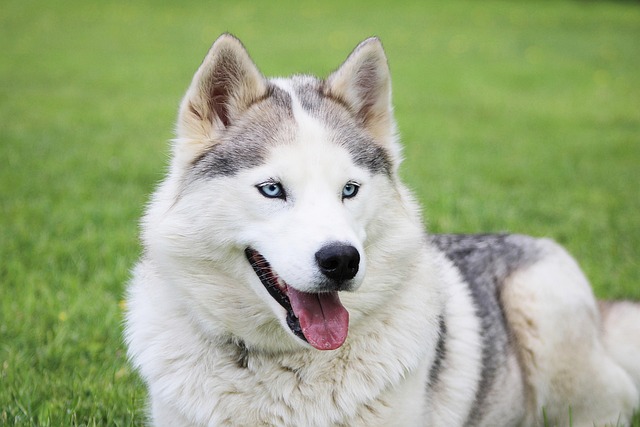
How can I tell if my dog's heatstroke is serious
Let’s be real: It’s a sticky August morning in Los Angeles, and you took your 2-year-old Golden Retriever, Max, for a walk a little later than usual
If you’re a new dog owner in California staring at your 1-year-old Golden Retriever’s matted tail after a bath, yanking gently and feeling them flinch, or a first-timer in Ohio struggling to brush your Poodle’s frizzy coat—wondering why shampoo alone isn’t cutting it—you’re far from alone. Figuring out how to condition a dog’s fur is one of the most common grooming headaches for U.S. pet parents, but it’s simpler than you think. Let’s break down how to do it right, why it matters, and what U.S. rules and kind care mean for you and your pup.
First, the simple science: Your dog’s fur isn’t just “hair”—it has tiny protective layers called cuticles. Shampoo cleans dirt, but it strips away the natural oils that keep those cuticles smooth. Without those oils, fur gets dry, tangles easily, and can even irritate their skin (think: red, itchy spots). Vets in Texas and New York say this is why so many pups end up with mats after baths—especially long-haired breeds like Shih Tzus or double-coated ones like Huskies. My client in Oregon learned this the hard way: She bathed her Rescue Pit Bull weekly with just shampoo, and his short coat got so dry he started scratching until he had small bumps. Adding conditioner fixed it in two weeks—his fur was softer, and the scratching stopped.
The key to conditioning is picking the right product and using positive training to make it stress-free. First, skip human conditioner—its chemicals can burn your dog’s skin! Grab a vet-approved dog conditioner (look for ones with oatmeal or coconut oil—great for sensitive skin). A client in Illinois swears by a peanut butter-scented option for her Shih Tzu; he licks the lather (safely!) and stays calm. Here’s how to apply it: After shampooing, squeeze excess water from their fur—don’t rub, just press gently. Work conditioner through their coat with your fingers, focusing on tangly spots (like a Golden’s ears or a Poodle’s legs) but never the face (it can irritate their eyes). Let it sit for 2-3 minutes—use this time to praise your pup and give a tiny freeze-dried chicken treat. Rinse thoroughly—leftover conditioner makes fur greasy and attracts dirt. If your dog hates baths, start small: Let them stand in the tub for a treat, then add water slowly. Never force them or yell if they splash—positive reinforcement turns bath time into a bond, not a fight.

Now, let’s cover U.S. rules and daily life. First, compliance: Every state requires rabies vaccines, but cities like Chicago and Seattle mandate annual vet checkups—your vet can recommend a conditioner if your dog has skin allergies (neglecting this could violate local “responsible pet owner” laws). For apartment living: Dry your dog fully after conditioning—damp fur smells musty, and neighbors won’t appreciate the odor seeping through walls. Use a quiet, low-heat hair dryer to avoid disturbing people next door. And community rules: Always carry poop bags on walks (New York City fines up to $300 for forgetting!)—even if your pup’s fur is perfectly conditioned, this is non-negotiable for U.S. pet owners. Keep them leashed in parks, too—matted fur can get caught on bushes, so a leash helps you guide them away from tangles.
Conditioning isn’t about making your dog “fancy”—it’s about keeping them comfortable. Whether your pup has long curls or short fur, a little dog-safe conditioner and lots of treats go a long way. Grab that bottle, fill the tub slowly, and take it one step at a time. Their soft, shiny coat and happy wag will tell you you’re doing it right.

Let’s be real: It’s a sticky August morning in Los Angeles, and you took your 2-year-old Golden Retriever, Max, for a walk a little later than usual

You're enjoying a summer afternoon at the park when you notice your dog has stopped panting and appears disoriented - their gums are bright red

Let’s paint the picture: You’re in your Denver apartment, watching your 4-year-old Boston Terrier, Ruby, plop down mid-play session with her favorite toy

Many dog owners notice their pets nails seem shorter after regular walks,but how much does this daily activity actually help?The answer depends on where you walk—concrete sidewalks or asphalt streets gently file nails as a dog's paws hit the ground

Most dog owners notice their pup scooting across the carpet at some point, but few connect it to impacted anal glands. These small sacs near a dog’s rectum secrete a scent for marking territory

Most vets agree that regular dog teeth cleaning is key to avoiding painful dental issues later. For healthy adult dogs, a professional cleaning at the vet’s office every 12 to 18 months usually works well.